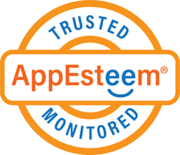Whether you’re a small business owner or an individual looking to safeguard private documents, file encryption is a powerful tool to secure sensitive information. If you’re asking yourself why it’s important, consider that research has found that lack of encryption is the primary cause of sensitive data loss. This article will explore why encrypting your personal files is essential, how encryption works, and how you can implement it effectively.
What Is File Encryption?
At its core, file encryption is a method of converting data into an unreadable format to prevent unauthorized access. Think of it as locking your information in a digital safe that only someone with the correct key can open, or transcribing all of your files into a secret code and only giving certain entities the key to decipher them. Encryption ensures that even if your files are intercepted or stolen, they remain inaccessible without the decryption key.
Why Is Encryption Important for Personal Files?
Encrypting your personal files isn’t just about staying ahead of cybercriminals — it’s about maintaining your privacy, protecting sensitive data, and adhering to regulatory requirements.
Protection from unauthorized access
Your personal files may include sensitive information like financial records, medical data, or personal correspondence. Without encryption, these files are vulnerable to unauthorized access. Hackers and opportunistic thieves could exploit unprotected data. Encryption creates a robust barrier, ensuring your files remain secure even if your device or network is compromised.
Maintaining privacy
Despite the need many feel to share everything on social media, everyone has a right to privacy, whether they store their personal information online or in a safe. Encrypting your files protects you from prying eyes, whether from malicious actors or inadvertent breaches. For instance, if you’re sharing documents via email or storing them on cloud platforms, encryption ensures that only intended recipients can access the content.
Compliance with data regulations
Why is encryption important for businesses? Simply put, it’s often a legal requirement. Regulations such as the General Data Protection Regulation (GDPR) and the California Consumer Privacy Act (CCPA) mandate stringent measures to protect sensitive information. Non-compliance can result in hefty fines, and damage to your reputation.
How Does File Encryption Work?
Understanding how encryption works can help demystify this security measure. While the underlying technology can be complex, the basic principles are very straightforward.
Data encryption
Encryption starts with transforming your readable data (plaintext) into an unreadable format (ciphertext) using an encryption algorithm and a unique key. This ciphertext appears as a jumbled sequence of characters, making it useless to anyone without the corresponding key.
Data decryption
Decryption is the reverse process, where the ciphertext is converted back into plaintext using the same algorithm and a corresponding decryption key. This ensures that authorized users can access the original data, while keeping it hidden from everyone else.
Symmetric encryption
In symmetric encryption, the same key is used for both encryption and decryption. While this method is faster and more straightforward, it requires secure key sharing to prevent unauthorized access.
Asymmetric encryption
Asymmetric encryption uses two keys: a public key for encryption and a private key for decryption. This method enhances security by ensuring that the decryption key remains private and never needs to be shared.
Choosing the Right File Encryption Software
Selecting the right file encryption software is the first step to safeguarding your data. Here are key factors to consider.
User-friendliness
The best encryption tools are intuitive and easy to use, even for individuals without a technical background. Look for software with a straightforward interface and clear instructions to simplify the encryption process (and put your mind at ease).
Security features
Ensure the software employs robust encryption algorithms, such as AES-256 or RSA, to provide maximum protection. Additional features such as two-factor authentication (2FA) and secure key management can also help to further enhance your security.
Compatibility
Your encryption software should be compatible with your devices and operating systems. Whether you use Windows, macOS, or Linux, ensure the tool integrates seamlessly with your existing workflow.
Support and updates
Opt for software with reliable customer support and regular updates to address emerging threats and maintain compatibility with the latest technology — software that is dated or overly simplistic might have vulnerabilities that hackers can exploit.
Some comprehensive solutions, such as System Mechanic Ultimate Defense, can offer all-in-one encryption, password management, antivirus and malware removal in one, preventing the need for multiple software programs.
How to Encrypt Your Personal Files: A Step-by-Step Guide
Encrypting your files may sound intimidating, but it’s a straightforward process when you have the right tools. Follow these steps to secure your sensitive data.
Identify sensitive files
Start by identifying the files you need to encrypt. These might include:
- Financial records — Such as tax returns or bank statements.
- Personal identification documents — Including scanned passports or Social Security cards.
- Private communications — Such as any emails or personal letters.
- Sensitive work-related files — Such as invoices or private correspondence.
Select encryption tool
Choose a reliable file encryption software based on the criteria outlined above.
Encrypt the files
Follow the software’s instructions to encrypt your files. Typically, this involves selecting the files or folders you want to secure, setting a strong password or key, and initiating the encryption process. Simple!
Test decryption
After encrypting your files, perform a test to ensure you can decrypt them successfully. This will verify that your encryption software is functioning correctly, and that your decryption key or password is correct and stored.
Benefits of File Encryption for Long-Term Security
Encrypting your files isn’t just about immediate protection; it offers lasting benefits that help secure your data over time.
Data confidentiality
Encryption ensures that your personal files remain confidential, even if they are intercepted or accessed without authorization. This is particularly important for sensitive information like health records or proprietary business data.
Protection from cyber threats
Cyber threats — every time we think we’ve built our walls up enough to keep them out, they find a back door. But encryption provides a robust defense against common attacks, including data breaches, ransomware, and phishing schemes. It means that even if attackers gain access to your files, the data is useless to them.
Compliance and reputation
For businesses, encryption helps ensure compliance with data protection laws, avoiding legal repercussions and potentially-hefty financial penalties. It also demonstrates a commitment to security, bolstering trust and reputation among customers and stakeholders.
Keep it cryptic
We’re not speaking in code when we say that encrypting your personal files is a crucial step in protecting your information and maintaining your privacy. By understanding how encryption works, choosing the right tools, and implementing best practices, you can safeguard your sensitive data and enjoy peace of mind.
Take a look at more resources for staying safe online and being proactive in protecting your data and devices.








